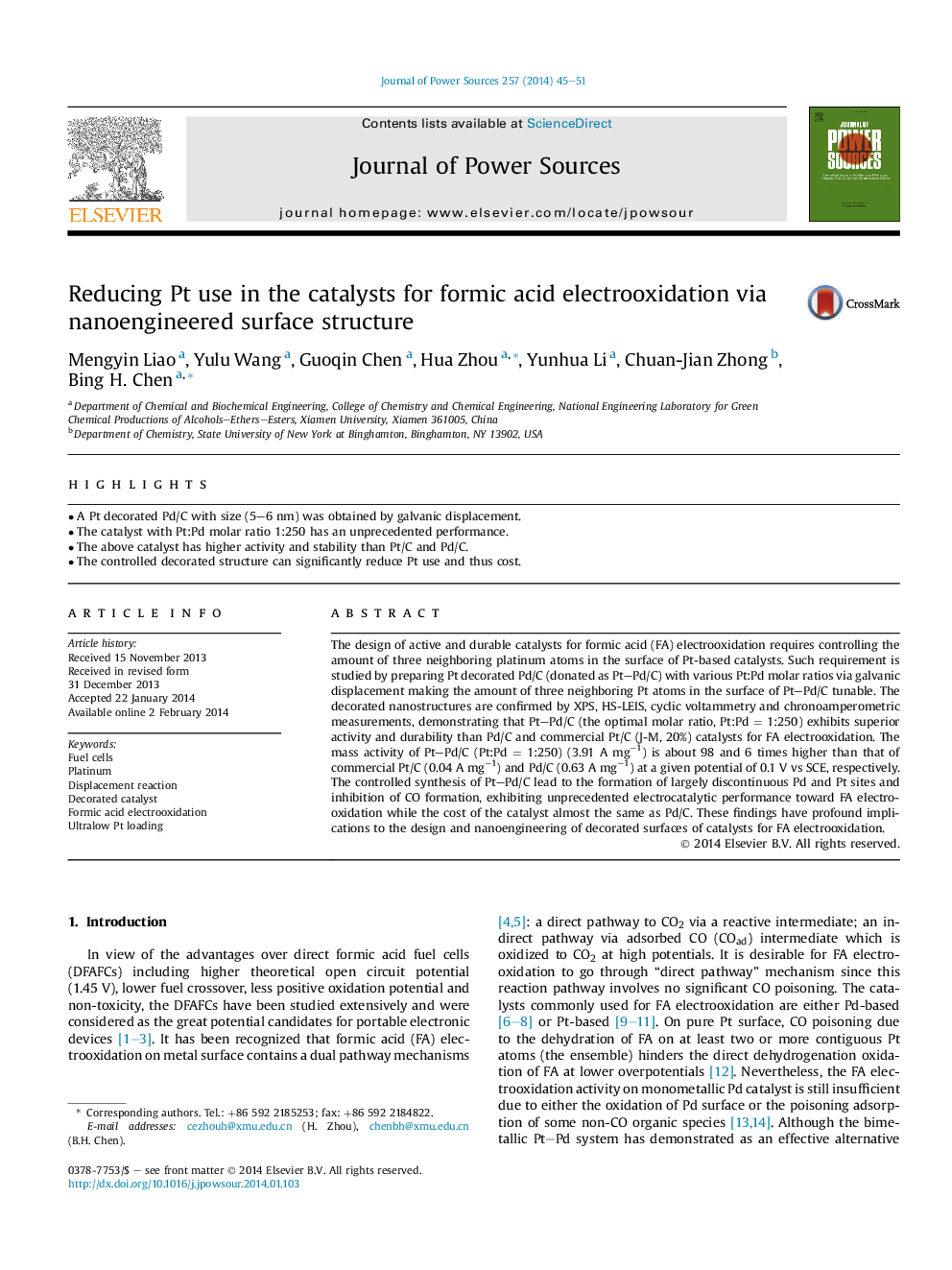| Article ID | Journal | Published Year | Pages | File Type |
|---|---|---|---|---|
| 7736770 | Journal of Power Sources | 2014 | 7 Pages |
Abstract
The design of active and durable catalysts for formic acid (FA) electrooxidation requires controlling the amount of three neighboring platinum atoms in the surface of Pt-based catalysts. Such requirement is studied by preparing Pt decorated Pd/C (donated as Pt-Pd/C) with various Pt:Pd molar ratios via galvanic displacement making the amount of three neighboring Pt atoms in the surface of Pt-Pd/C tunable. The decorated nanostructures are confirmed by XPS, HS-LEIS, cyclic voltammetry and chronoamperometric measurements, demonstrating that Pt-Pd/C (the optimal molar ratio, Pt:Pd = 1:250) exhibits superior activity and durability than Pd/C and commercial Pt/C (J-M, 20%) catalysts for FA electrooxidation. The mass activity of Pt-Pd/C (Pt:Pd = 1:250) (3.91 A mgâ1) is about 98 and 6 times higher than that of commercial Pt/C (0.04 A mgâ1) and Pd/C (0.63 A mgâ1) at a given potential of 0.1 V vs SCE, respectively. The controlled synthesis of Pt-Pd/C lead to the formation of largely discontinuous Pd and Pt sites and inhibition of CO formation, exhibiting unprecedented electrocatalytic performance toward FA electrooxidation while the cost of the catalyst almost the same as Pd/C. These findings have profound implications to the design and nanoengineering of decorated surfaces of catalysts for FA electrooxidation.
Related Topics
Physical Sciences and Engineering
Chemistry
Electrochemistry
Authors
Mengyin Liao, Yulu Wang, Guoqin Chen, Hua Zhou, Yunhua Li, Chuan-Jian Zhong, Bing H. Chen,
